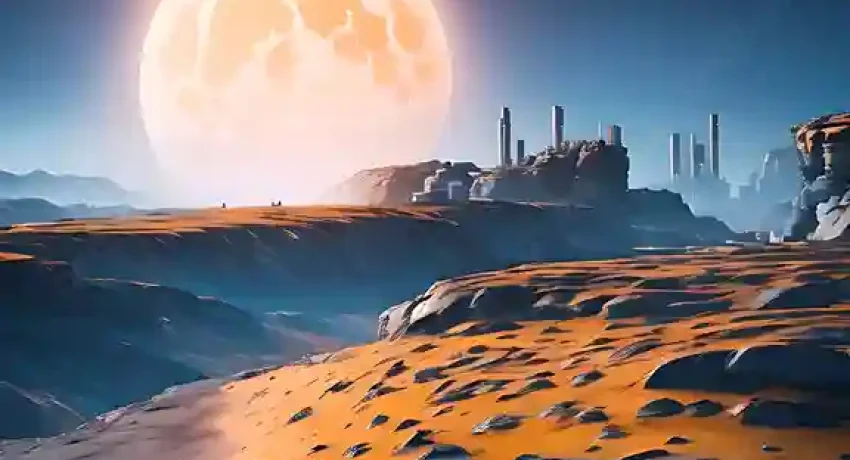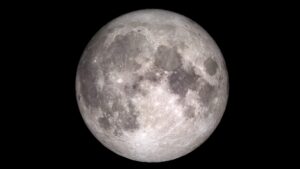The term “Mars full moon” might sound like an astronomical anomaly, but it holds a fascinating spot in celestial studies. This phrase doesn’t imply Mars itself having a moon similar to Earth’s full moon, but rather explores how Mars’ moons Phobos and Deimos are perceived, and how Mars is observed from Earth during a full moon phase. In this article, we delve deep into the science and myths surrounding the “Mars full moon.”
Mars, also known as the Red Planet, is the fourth planet from the Sun and a significant object of human fascination. While it has two moons, Phobos and Deimos, they do not display the bright and large “full moon” appearance as seen from Earth. However, the phrase “Mars full moon” often piques curiosity among astronomy enthusiasts, inviting exploration of its celestial and cultural implications.
What is a Mars Full Moon?
To understand the term “Mars full moon,” it’s crucial to differentiate between the moons of Mars and Earth’s perspective on Mars during specific lunar phases.
Mars’ Moons – Phobos and Deimos
Mars is home to two small and irregularly shaped moons, Phobos and Deimos. Unlike Earth’s moon, these celestial bodies are not large enough to create phases visible from Mars’ surface similar to our full moon.
Phobos, the larger of the two, orbits Mars at a very close distance, completing its orbit in just 7.6 hours. This rapid movement means Phobos rises in the west and sets in the east, appearing as a fast-moving object across the Martian sky. Deimos, on the other hand, has a slower orbit, taking 30.3 hours to complete one rotation and appears more stationary in comparison.
While these moons do not exhibit a full moon phase for an observer on Mars, their unique characteristics contribute to Mars’ overall celestial intrigue. Observing them provides valuable insights into the dynamics of Mars’ gravitational influence and its interaction with these captured objects.
Observing Mars During a Full Moon from Earth
When Earth’s moon is full, the night sky becomes an excellent backdrop for observing other celestial bodies. Mars, being one of the brightest planets, often appears more striking during such phases due to the moon’s illumination. This alignment creates an ideal condition for stargazers to witness the vibrant reddish hue of Mars, enhanced by the contrast against the moonlit night.
During opposition, Mars is at its closest approach to Earth, offering an even more spectacular view. These moments allow enthusiasts to spot surface details of Mars through telescopes, including its polar ice caps and dark regions.
The Science Behind Mars’ Moons
Mars’ moons have intrigued astronomers for centuries. Their origin, behavior, and interaction with Mars present fascinating insights.
Origin of Mars’ Moons
It’s widely believed that Phobos and Deimos were once asteroids from the asteroid belt, captured by Mars’ gravity millions of years ago. Their irregular shapes and composition closely resemble those of carbonaceous asteroids, further supporting this theory. However, some alternative theories suggest they could have formed from debris resulting from a massive impact on Mars’ surface.
The capture hypothesis is bolstered by their non-circular orbits and peculiar surface features, which differ significantly from the smooth, rounded characteristics of Earth’s moon. Studying their origin provides clues about the dynamic processes of our solar system’s early history.
Orbital Dynamics
Phobos’ rapid orbit is causing it to spiral closer to Mars, leading scientists to predict its eventual disintegration within the next 30-50 million years. This process may result in the formation of a temporary ring system around Mars. Deimos, on the other hand, is slowly drifting away, showcasing contrasting orbital behaviors that continue to perplex astronomers.
Understanding these dynamics helps scientists predict long-term changes in Mars’ gravitational environment and the future of its moons.
Mars Full Moon in Astronomy and Culture
The idea of a “Mars full moon” extends beyond science, weaving itself into the fabric of myths and pop culture.
Astronomical Significance
The phrase often arises during Mars oppositions, when Earth, Mars, and the Sun align. These events make Mars appear exceptionally bright and reddish, captivating stargazers worldwide. The enhanced visibility during these periods enables detailed study of Mars’ surface and atmospheric phenomena, enriching our understanding of the planet.
Cultural and Mythological Interpretations
Mars has always held a significant place in human imagination. Ancient cultures associated it with war and aggression, as seen in its Roman namesake, the god of war. Its reddish hue has inspired tales of fiery battles and divine omens. Similarly, its moons Phobos and Deimos, named after the Greek deities of fear and terror, add an extra layer of mystique to the Martian system.
In modern times, Mars continues to inspire literature, movies, and art, symbolizing both human curiosity and the potential for extraterrestrial exploration.
Best Practices for Observing Mars During a Full Moon
For astronomy enthusiasts, observing Mars during a full moon can be a rewarding experience. Here are some tips to enhance your stargazing adventure:
Use a Telescope
A quality telescope can reveal details about Mars’ surface features, such as polar ice caps and dark regions. Using filters designed for planetary observation can further enhance these details, providing a vivid view of Mars’ unique geography.
Check the Timing
Mars is best observed during opposition when it is closest to Earth. Using astronomy apps can help pinpoint the ideal time. Keep an eye on astronomical calendars for updates on Mars’ position relative to Earth and other celestial bodies.
Select a Dark Sky Location
Minimize light pollution by finding a remote location, as this will provide the clearest view of Mars and its surroundings. Dark sky parks or rural areas often offer the best conditions for stargazing.
Capture the Moment
Astrophotography enthusiasts can use long exposure settings to capture the beauty of Mars against the backdrop of a moonlit sky. With proper equipment, you can document the intricate details of this celestial pairing.
Fascinating Facts About Mars’ Moons
Here are some intriguing facts about Phobos and Deimos:
- Phobos orbits closer to its planet than any other moon in the solar system.
- Deimos’ name translates to “panic” or “terror,” reflecting its mythological origins.
- Phobos is gradually moving closer to Mars and may eventually form a ring system.
- Unlike Earth’s moon, both Phobos and Deimos have highly irregular shapes, resembling asteroids more than spherical moons.
- The surface of Phobos is marked by massive grooves, likely caused by tidal forces from Mars.
FAQs About Mars Full Moon
Does Mars have a full moon phase like Earth?
No, Mars’ moons do not have the size or reflectivity to exhibit phases similar to Earth’s moon. Their irregular shapes and proximity to Mars prevent them from showing distinct phases.
Why is Mars more visible during a full moon?
The full moon phase provides a bright night sky, making Mars stand out due to its reddish hue. This contrast enhances its visibility, especially during opposition.
What’s the best time to observe Mars?
Mars is most visible during opposition, which occurs approximately every 26 months. This period offers the best opportunity to observe its surface details and brightness.
Can we see Mars’ moons from Earth?
No, Mars’ moons are too small and dim to be seen with the naked eye or even most amateur telescopes.
Conclusion
The “Mars full moon” might be a misnomer in astronomical terms, but it symbolizes the enduring fascination with celestial phenomena. From the captivating presence of Phobos and Deimos to Mars’ bright appearance during Earth’s full moon, the Red Planet continues to inspire curiosity and wonder. By blending science, mythology, and observational tips, this celestial event remains an awe-inspiring subject for astronomers and enthusiasts alike.
Mars not only represents the mysteries of our solar system but also the boundless possibilities of exploration and discovery. Its moons, though small and unassuming, are testaments to the dynamic history of the cosmos, urging humanity to look beyond and dream of the stars.












